Is your website struggling to rank high on search engines? The issue could be related to your keyword strategy. While primary keywords are important, so are secondary keywords.
However, it can be challenging to identify and find the right secondary keywords to use in your content, especially if you’re working alone.
In this post, I’ll show you how to identify and find effective secondary keywords, best practices for using them in your content, and examples of successful content that uses secondary keywords effectively.
By the end of this post, you’ll have a better understanding of how to use secondary keywords to improve your website’s search engine rankings and attract more traffic to your content.
What are Secondary Keywords?

Secondary keywords are semantically relevant words that are associated closely with the primary keyword that you are targeting on your page. Secondary keywords help you provide more information and details to your content, covering it more in-depth, and improving the quality of your content. This, in turn, increases the ranking for more related keywords and drives more organic traffic.
Why are Secondary Keywords Important?
Secondary keywords are an essential part of the on-page SEO for every page on your website. They improve the perceived quality of the content and increase ranking for more relevant keywords, resulting in improving the organic traffic potential the page can bring to your website.
Using secondary keywords brings numerous benefits, and without using them, you cannot effectively optimize your page for on-page SEO and target the keyword. Search engines use secondary keywords to better understand your content and rank it for relevant search queries.
With that, here are the top three benefits of secondary keywords:
Benefit #1: Improve Semantic SEO
Using secondary keywords will help you improve the semantic SEO for the content and the entire website as you can provide more information and meet the search intent to broader relevant search queries to your primary keyword.
It also allows you to show search engines that your content is more comprehensive and covers a broad range of subtopics related to the main target topic which helps search engines better understand the context and theme of your content resulting in improvement of your page for certain search queries.
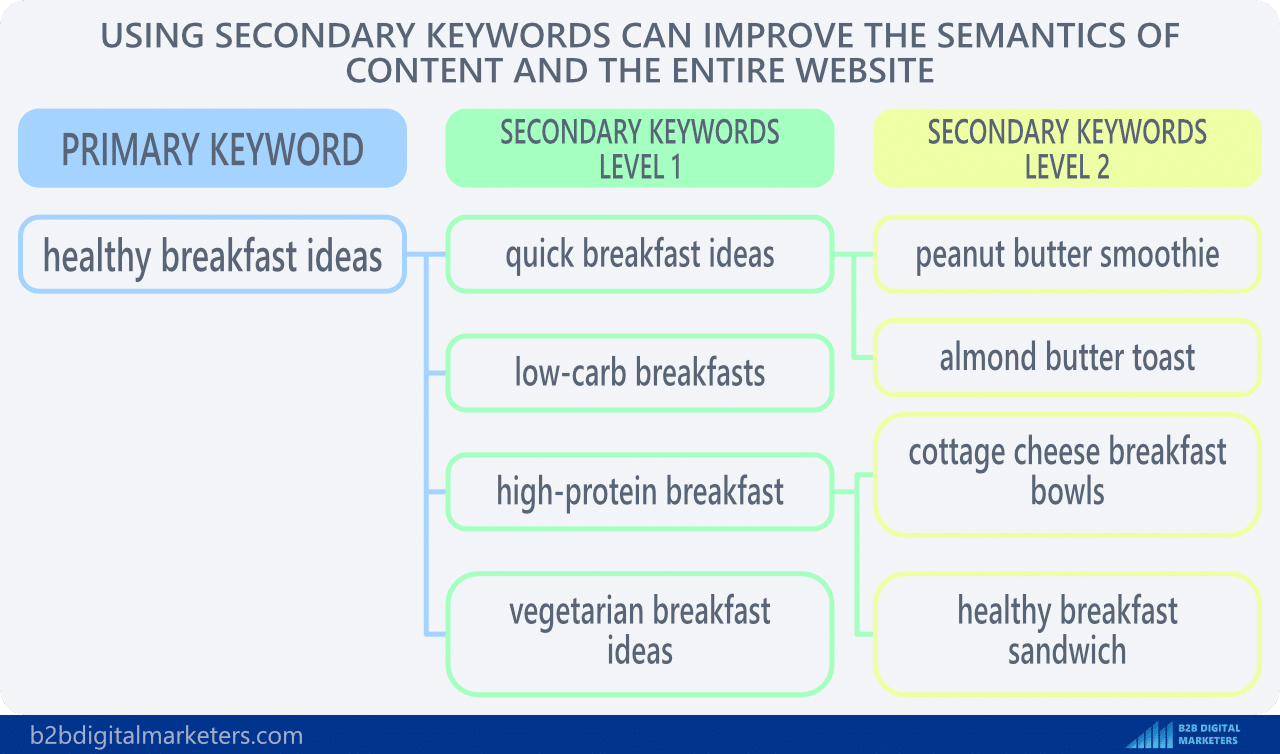
For example, if you are targeting the main primary keyword “healthy breakfast ideas” the examples of secondary keywords you could incorporate into the content such as:
- Quick breakfast ideas
- Almond butter toast
- Peanut butter smoothie
- 5-minute breakfast recipes
- Breakfast smoothies
- Vegetarian breakfast options
- Tofu breakfast scrambles
- Breakfast burritos with beans and veggies
- Quinoa and vegetable breakfast bowls
- Meatless breakfast ideas
- High-protein breakfasts
- Cottage cheese breakfast bowls
- Protein bars for breakfast
- Greek yogurt breakfast bowls
- Breakfast sandwiches with turkey, ham, or smoked salmon
- Low-carb breakfasts
- Low-carb breakfast muffins
- Keto breakfast recipes
- Breakfast smoothies with low-carb fruits and vegetables
- Low-carb breakfast bowls and omelets
By using these secondary keywords, your content can appeal to a large audience searching for healthy breakfast ideas resulting in better search visibility for more keywords, increasing ranking, and ultimately higher organic traffic.
Benefit #2: Improve SEO Content Planning & Internal Linking Structure
Another benefit of using secondary keywords for your website content is that it can improve your SEO content planning and internal linking structure.
To become a topical authority in your field and in the search market, you need to have a lot of SEO content on your website closely related to your main topic and then internally link those pieces of content with one another to create this semantic topical relevant map on your website.
And using secondary keywords as your next primary keyword can be an excellent way to build your topical map and topical authority in your niche or industry.
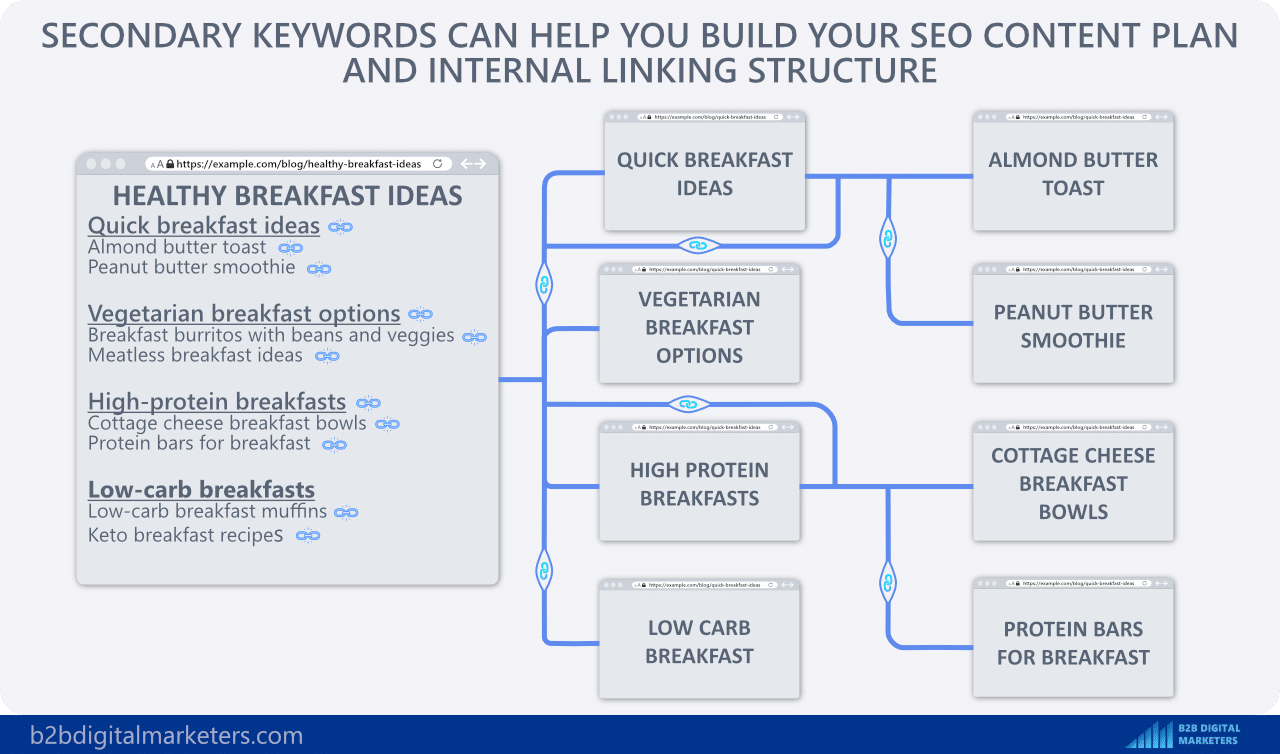
Coming back to the previous example from the first benefit of targeting the primary keyword “healthy breakfast ideas”, you could create specific pieces of content targeting each level 1 and level 2 secondary keyword and make them your primary keyword.
And then create relevant internal links with exact anchor text matching the primary keyword.
And like this, you would strategically build your SEO content plan and internal linking strategy which would result in faster and better ranking for each of your content and more organic traffic.
Benefit #3: Increase Ranking & Organic Traffic
And the last benefit of using secondary keywords that I want to mention whether it is for your content or content planning and internal linking strategy, they help you increase ranking and organic traffic.
The first way how secondary keywords can improve ranking is by helping you rank for more related search terms to your target primary keywords, which increases the ranking for those related search terms and even for your primary keyword resulting in an increase in your organic traffic potential for that page.
Secondly, you can then use these secondary keywords and make them primary keywords and target them with another piece of content. This way you can build strong semantic SEO which helps you to boost your topical relevancy and build topical authority resulting in faster and better ranking for your newly publish pages as well as an increase in organic traffic potential for your overall website.
Overall, secondary keywords are way more important than many realize and they can be a key strategic approach to building your SEO content plan and strategically start targeting and creating content on your website which helps you to increase organic traffic, improve ranking and bring relevant target audience with higher conversion rates.
How to Identify Secondary Keywords?
To identify secondary keywords, you first must know your primary keyword as secondary keywords are relative to the primary keyword you are targeting with your page.
Therefore, it’s first important to know what your primary keyword is and then based on that you can find relevant secondary keywords.
So identifying secondary keywords from other types of keywords is not hard, as most of the secondary keywords you find, can also become primary keywords, seed keywords, informational keywords, head keywords, or other types of keywords and secondary keywords can be used for other content as the primary keywords.
How to Find Secondary Keywords for Your Target Main Primary Keyword?
As I said, to identify and then find secondary keywords, you first must know your primary keyword. Once you know that, then you can start searching for secondary keywords.
With that here are 5 techniques that will help you to find your secondary keywords for your target main primary keyword:
Technique #1: Using Keyword Research Tool
The first way how you can find secondary keywords is by using keyword research tools such as SE Ranking.
For example, let’s say I am targeting the primary keyword “seo best practices”. So I will take the primary keyword and pop it into the SE Ranking keyword research tool, select my target location, and click on analyze.
And in the Keyword Suggestions report, I will get a list of relevant keywords that I can potentially use as secondary keywords.

Now not every keyword listed here can be used in the same way. Let me give you a few examples of some of the keywords from the list to explain what I mean:
- “best practices for seo”: This secondary keyword is just another variant of the main primary keyword “seo best practices” and it’s good to use it to have different keyword varieties and not just repeat the primary keyword.
- “ecommerce seo best practices”: This secondary keyword is different from “seo best practices” and it could be used as another primary keyword for different content. However, in the content for the primary keyword “seo best practices” the keyword “ecommerce seo best practices” can be used as a subheadline/category and subsequently provide relevant best practices to this subheadline which helps you expand the article with relevant information and make it more appealing for a wider audience.
- “on page seo best practices”: Same as before, this keyword can be used as another subheadline/category for the article targeting the primary keyword “seo best practices” to add more information and increase the value of the article.
- “seo title best practices”: This secondary keyword can be as another subheadline or it can be slightly modified to “seo title tags” and then it can become one of the SEO best practices listed in the article such as “Always A/B test SEO title tags”.
Here you can see the outline of how the article could look based on these keywords I have mentioned:
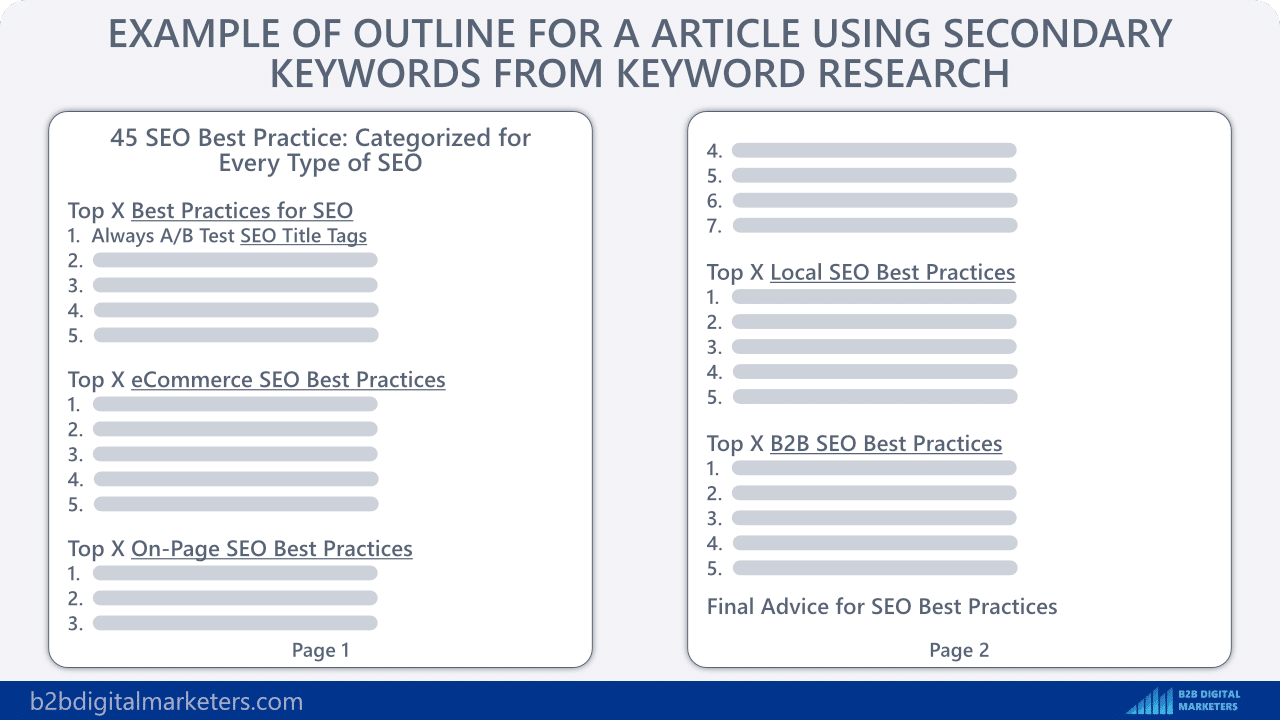
Technique #2: Analyzing Competitors in SERP
The second way how you can find secondary keywords is by analyzing the competitors in SERPs ranking for your primary keyword.
And there are actually two methods how you can do that:
Method #1: Analyze the Ranking Keywords
Using Competitor Research Tools such as SE Ranking, you can analyze the top-ranking competitors’ web pages and see what keywords the particular page is ranking for.
For example, here is a list of competitors ranking for the keyword “seo best practices”.

And if I look at the ranking keywords of the first competitor, I will get a similar list of potential secondary keywords that I can use for my content.
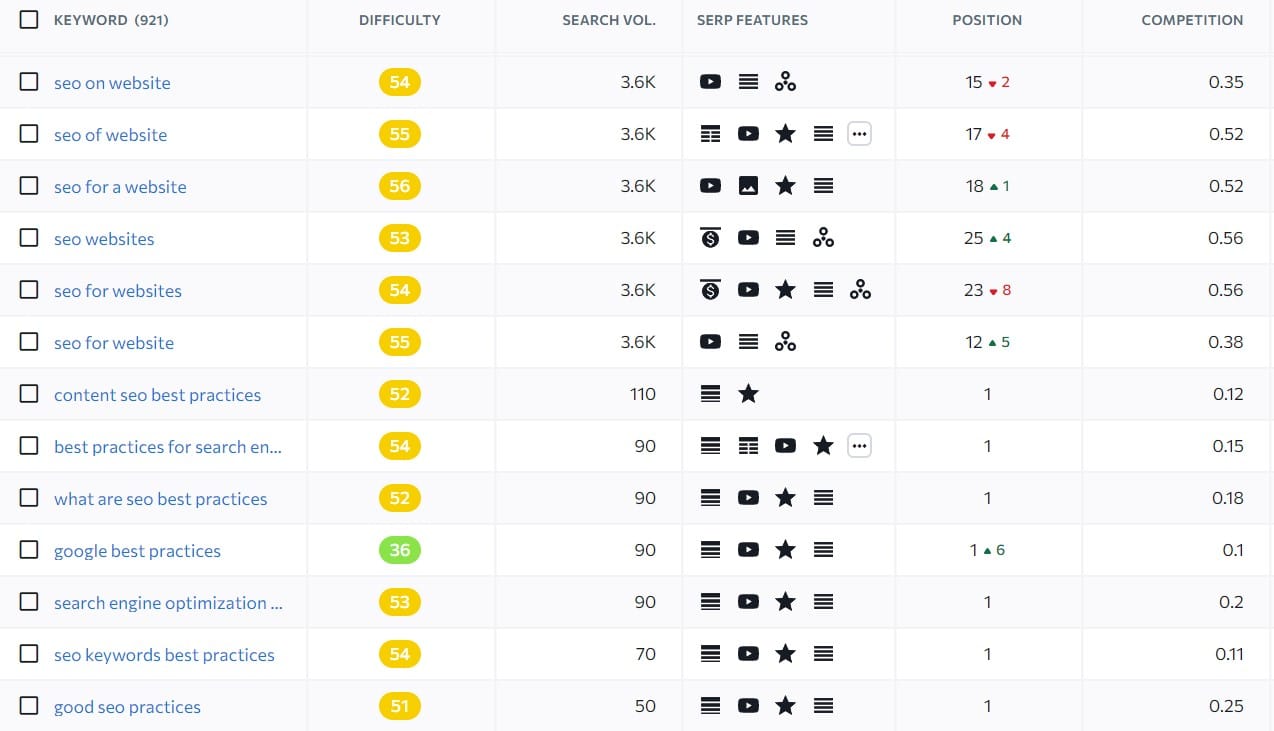
This is a similar technique to the first one, but the advantage of this is that you will get a more refined list of keywords that are way more relevant. The issue is, it can also be limiting.
Method #2: Analyze the Competitors Ranking Pages
The second method of the second technique is to analyze the competitors’ ranking pages and see what keywords and topics they have included within their websites.
The goal is to pick up most or all of the topics discussed on your competitors’ page ranking for your primary keyword and then create your ultimate page that covers all the topics.
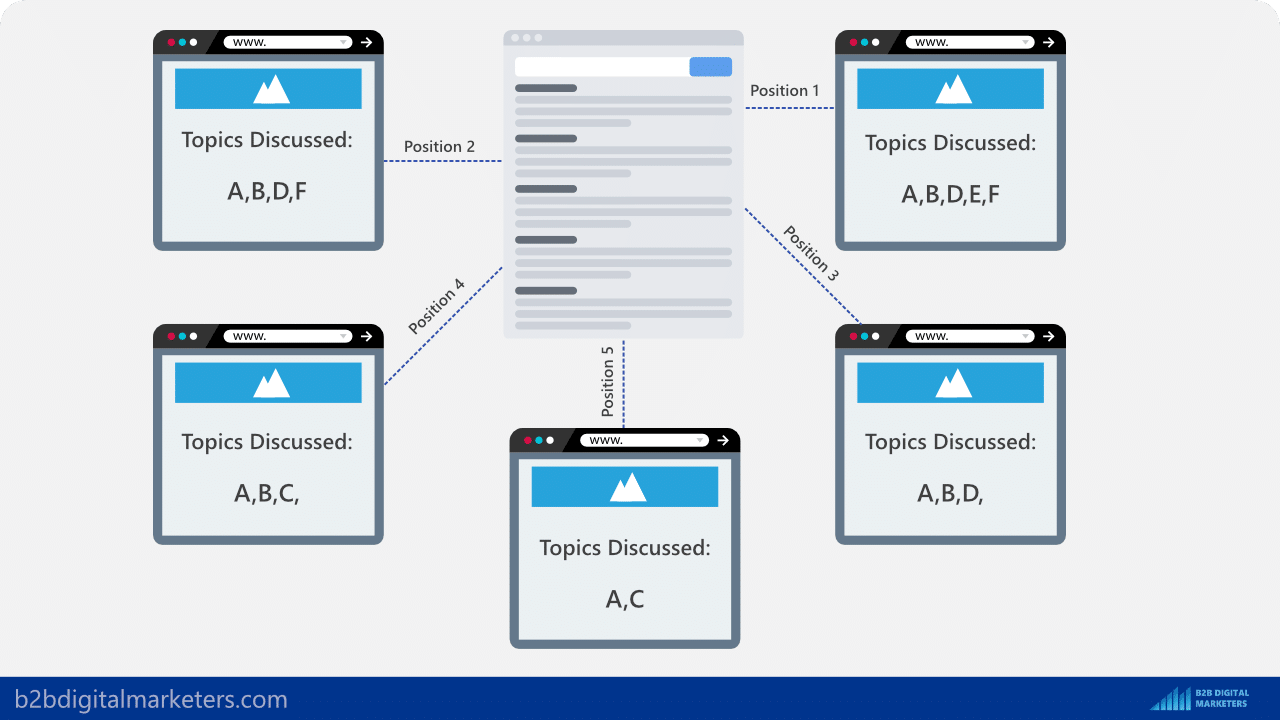
However, it’s important to note that Google does not like it if you use only this method! Copycat content does not work and you should also add your own topics.
According to the Google patent on Informational Gain, they want to reward articles that bring new information to the table.
According to their suggestion, the way to accomplish this is by utilizing a technique referred to as “information gain.” This is a metric that quantifies the novel information presented in an article beyond what is available in other articles on the same subject.
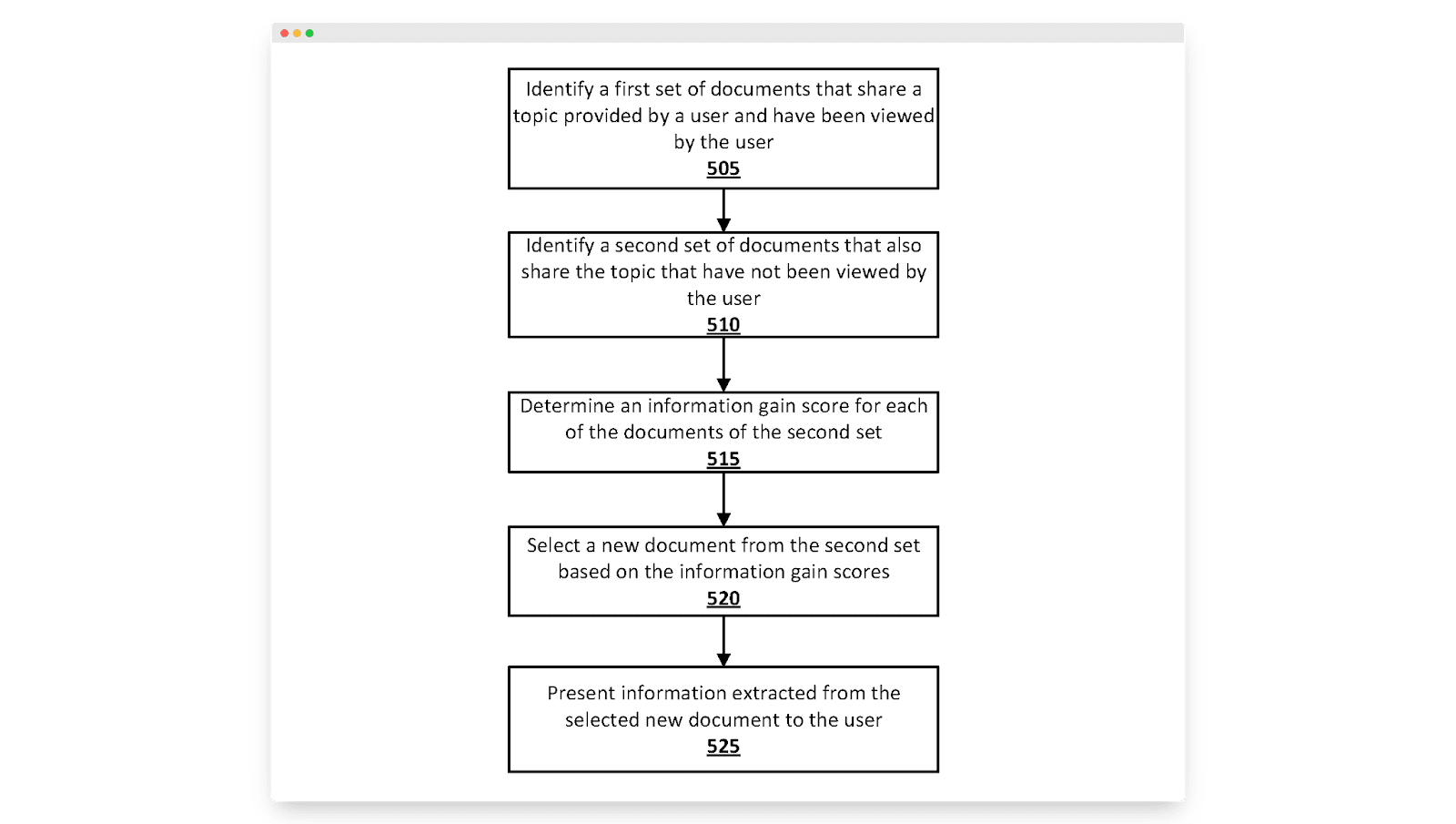
For nerds to learn more I recommend reading the article on Informational Gains from Animalz.
Technique #3: Use SEO Writing Tools
The next technique to find secondary and also LSI keywords is to use SEO writing tools such as Surfer SEO or SE Ranking.
With SEO writing tools such as SE Ranking Content Editor, you can easily add your target keywords and select your target location to get relevant suggestions.
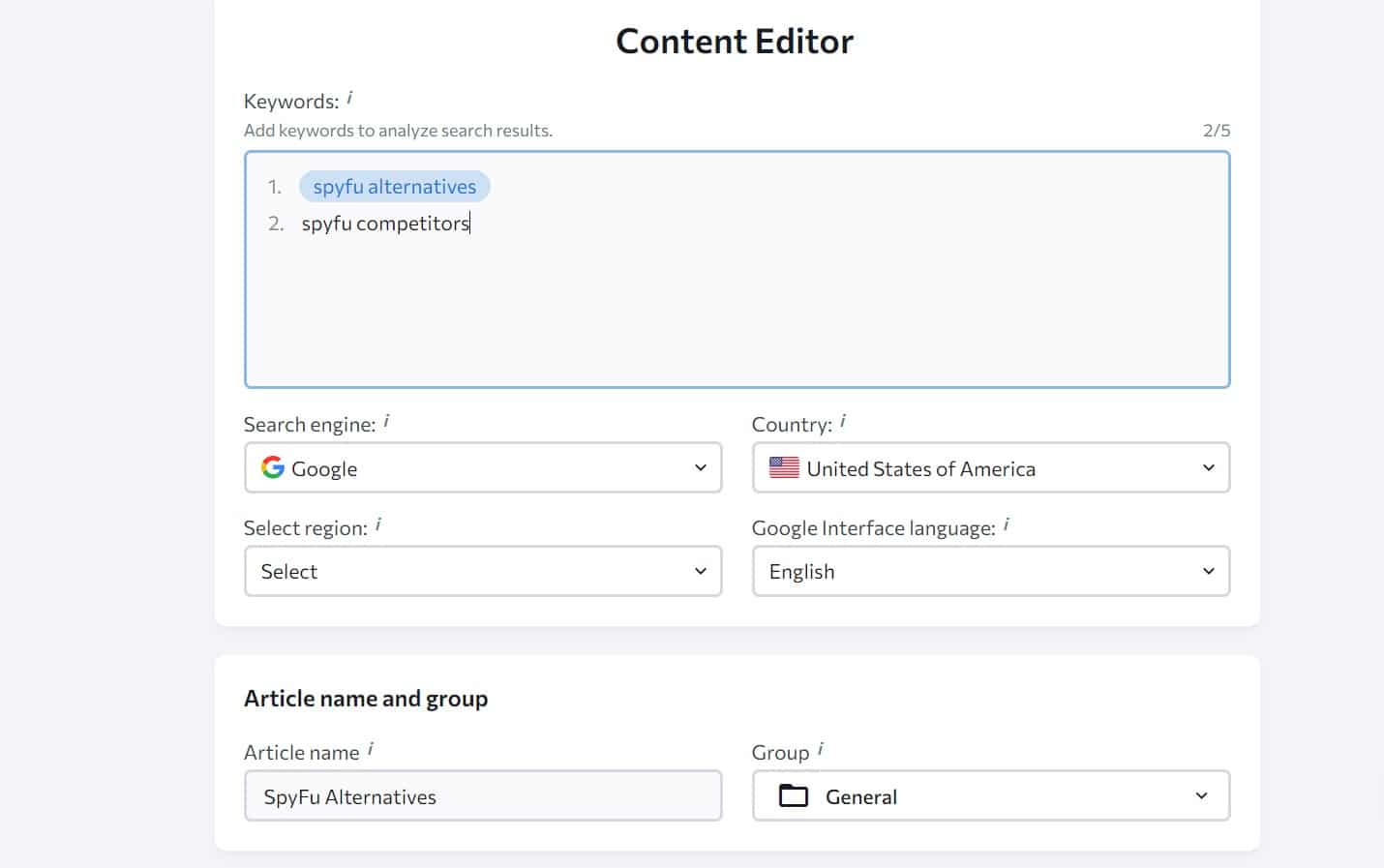
And then these tools provide you with relevant optimization and keyword suggestions according to the analysis of the top-ranking competitors and help you to quickly create content briefs with a content outline, recommended word count, headings, images, etc.
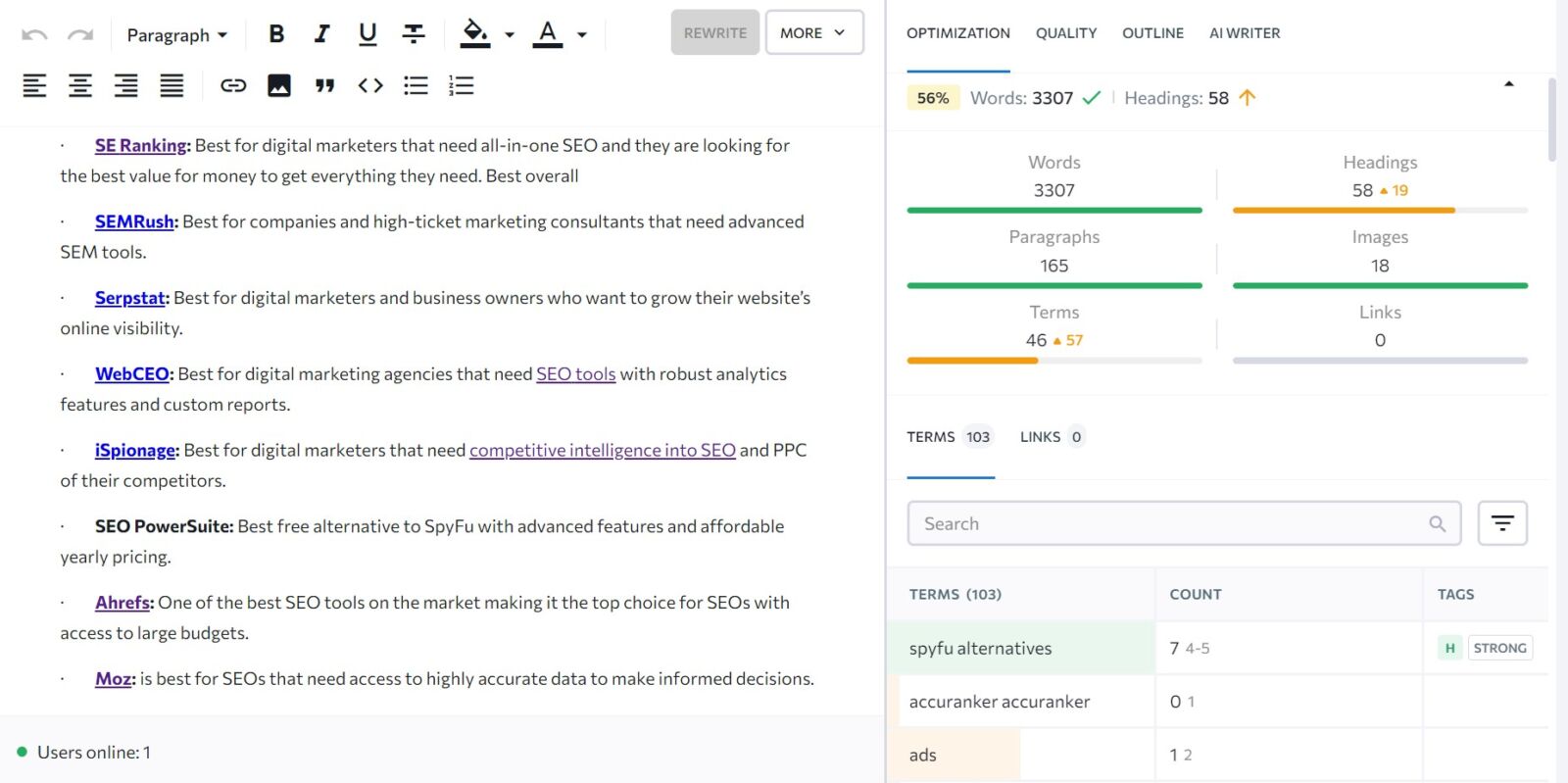
SE Ranking also offers an AI writer to help you quickly create different content depending on your needs.

And Surfer SEO and other tools provide similar features where you will get your recommended outline, list of relevant terms, content score, and more.
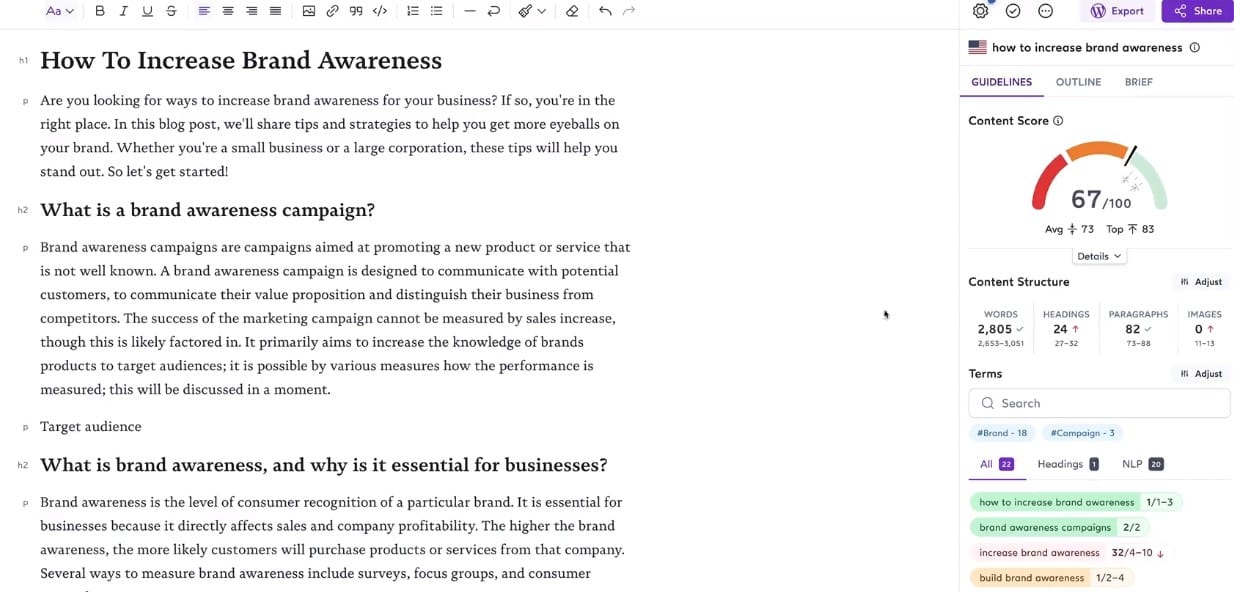
These tools help you to quickly create SEO-friendly content that fits search intent and ranks well in search engines. It’s especially useful if you are creating a higher volume of articles or you need to create content briefs for your writers.
Technique #4: Analyzing SERPs
The next technique that you can use and I highly recommend you do is to analyze the search engine result pages (SERPs) for your target keyword.
For example, if I am targeting the keyword “SEO best practices” I can use the SE Ranking Location Changer to change my location and get search results for my target country.
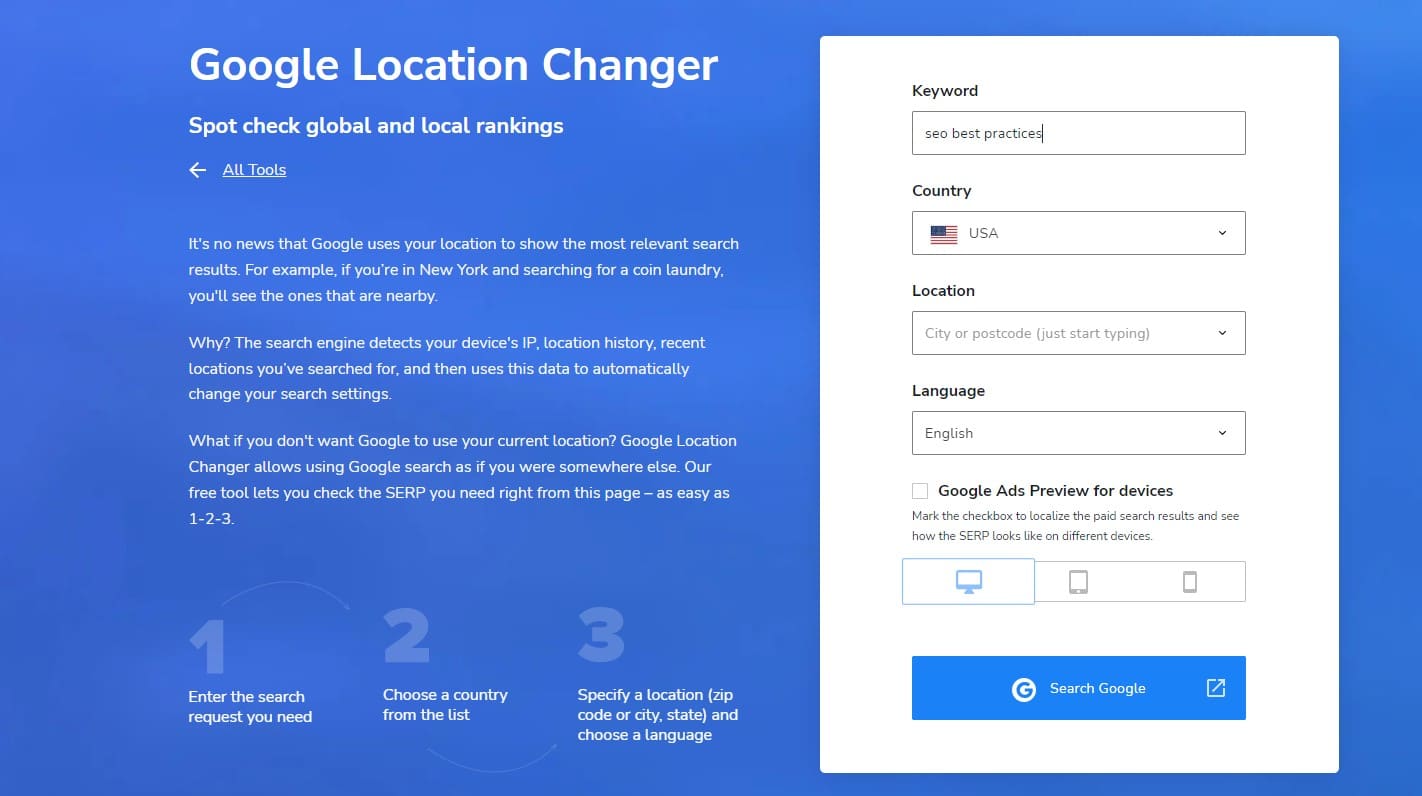
This gives me search results just like I would be in the selected country and not based on my personalization, location, or search history.
Now, I can analyze the SERPs using the following methods:
Method #1: Check Autocomplete
Using the search bar to get relevant secondary keyword ideas is a great way as it gives you the current search trends for that particular keyword. Just by clicking on the search bar, I get already relevant keyword ideas.

And then I can start adding letters in front or behind the search query which will change the autocomplete suggestions based on that, and I can select any relevant secondary keywords based on that.

Method #2: People Also Ask Box
This is my favorite way to find relevant secondary keywords and FAQs to add to the page be it for a blog post, product page, or any other page.
For example, if I would be writing an article targeting the primary keyword “seed keyword” I can analyze the People also ask box and pick any relevant questions that I could include within my content as a subheadline or for my FAQ section of the article.
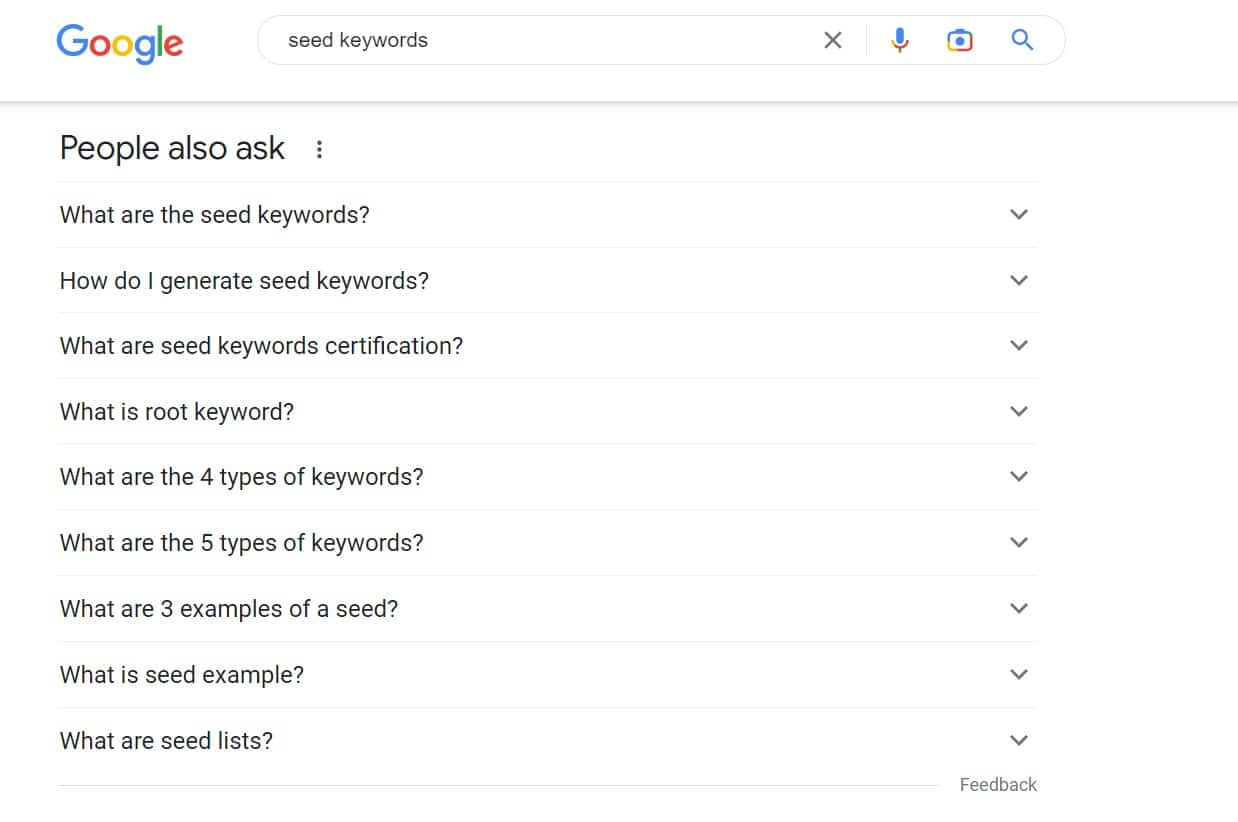
This way, I can rank for more relevant keywords for the article, answer relevant questions and improve the quality of my content, resulting in higher organic traffic potential.
Method #3: Bottom of Search Results
And the last method to find secondary keywords using Google SERPs is to check the bottom of the search for more relevant secondary keywords.
At the bottom of the search, Google provides more relevant keyword suggestions that you can use as secondary keywords and also to better understand which direction should you take with your content.
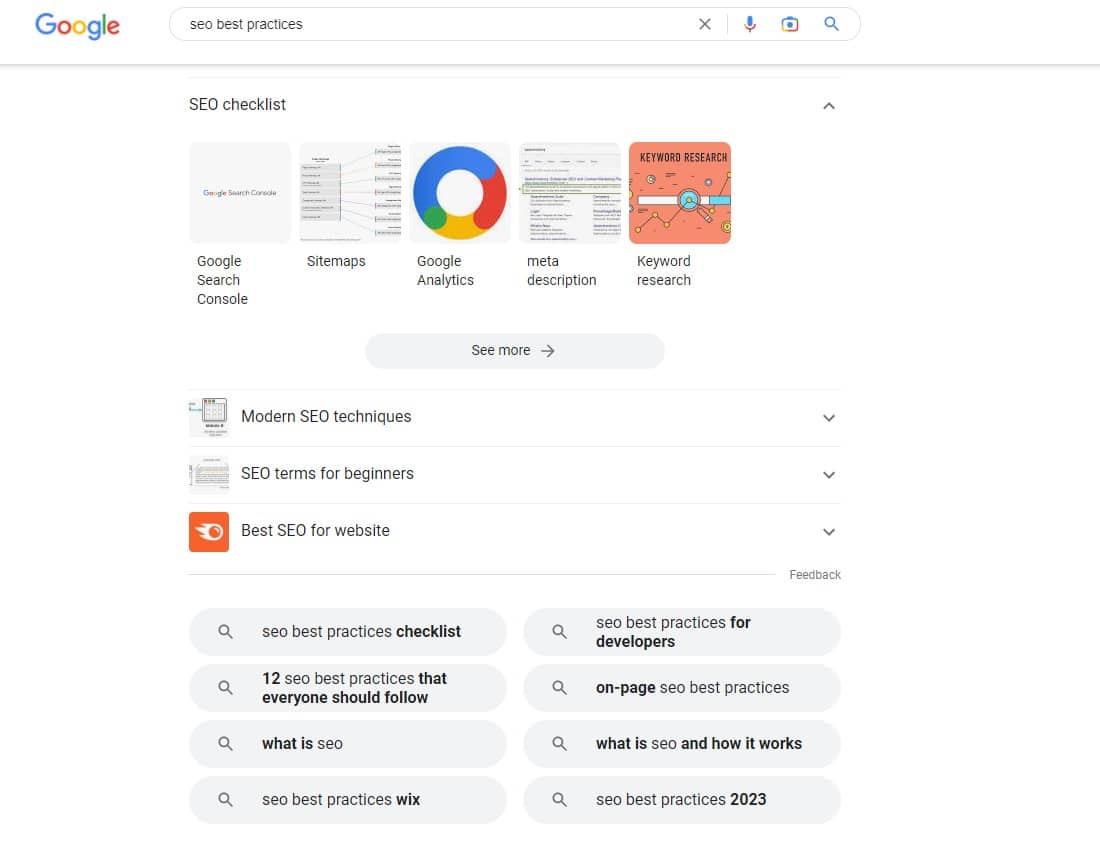
Again, a great way to improve the quality of your content and add more information to your content which can help you increase organic traffic potential and even your lead generation.
Technique #5: Secondary Keyword Generator
And the last technique that I want to mention to find secondary keywords is to use a secondary keyword generator or any free SEO keyword tools.
For instance, you can use any free SEO tools such as the Free Keyword Suggestion Tool and Free Keyword Density tool to find relevant secondary keywords.
The Keyword Suggestion Tool gives you the 10 most relevant keyword suggestions based on your entered primary keyword.
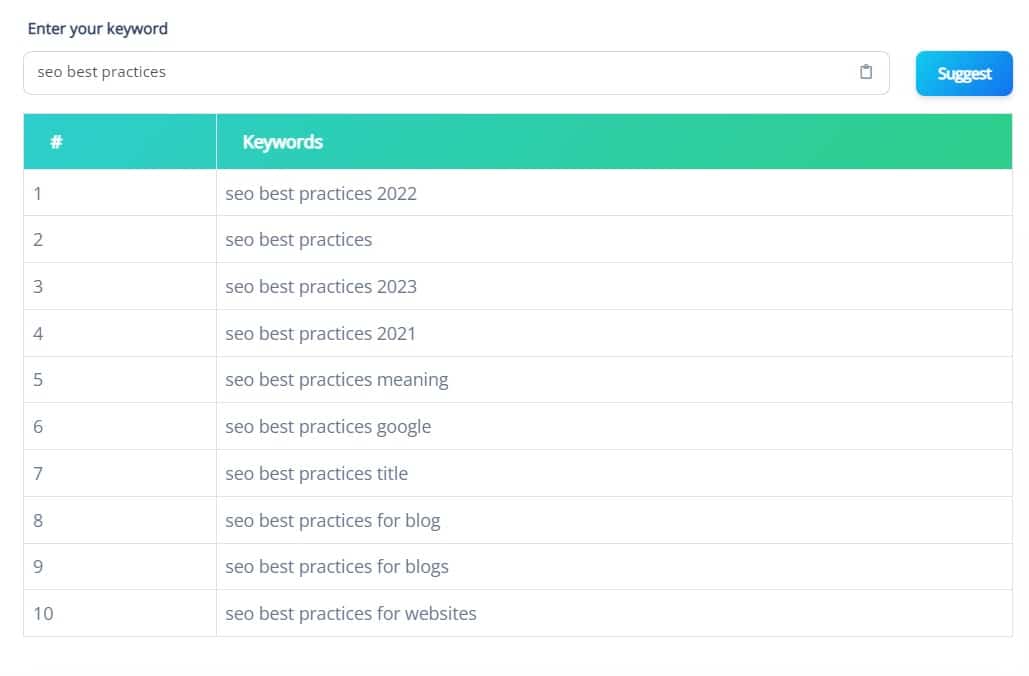
And the Keyword Density Checker Tool will analyze the page you entered and provide a list of hundreds of relevant keywords from which you can pick and choose which ones are the most relevant for your content.
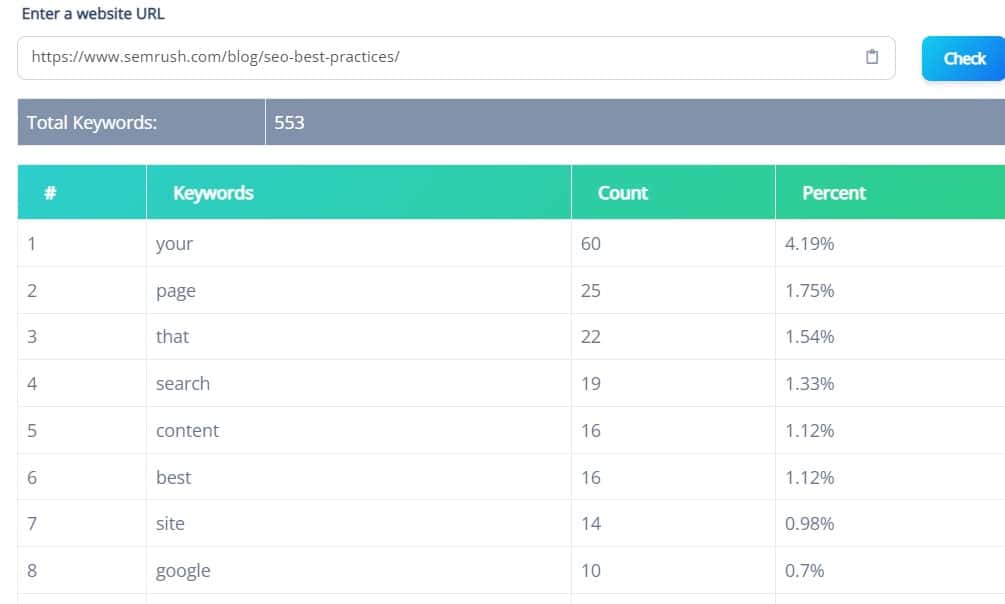
Overall, there are many different keyword research techniques to find secondary keywords, and being creative will help you to get ahead of your competitors.
So don’t worry to come up with your own ways of finding secondary keywords and try different methods to get the edge over your competitors so you can outrank them.
Secondary Keyword Best practices
Here are some best practices for using secondary keywords for your content:
Practice #1: Make Secondary Keywords Become Your Primary Keywords
The first secondary keyword best practice is to make your secondary keywords become your primary keywords in other of your content.
This way, you will be able to create highly and closely relevant content on your website that you can easily interlink with each other and build strong topical authority for your website resulting in higher organic traffic potential.
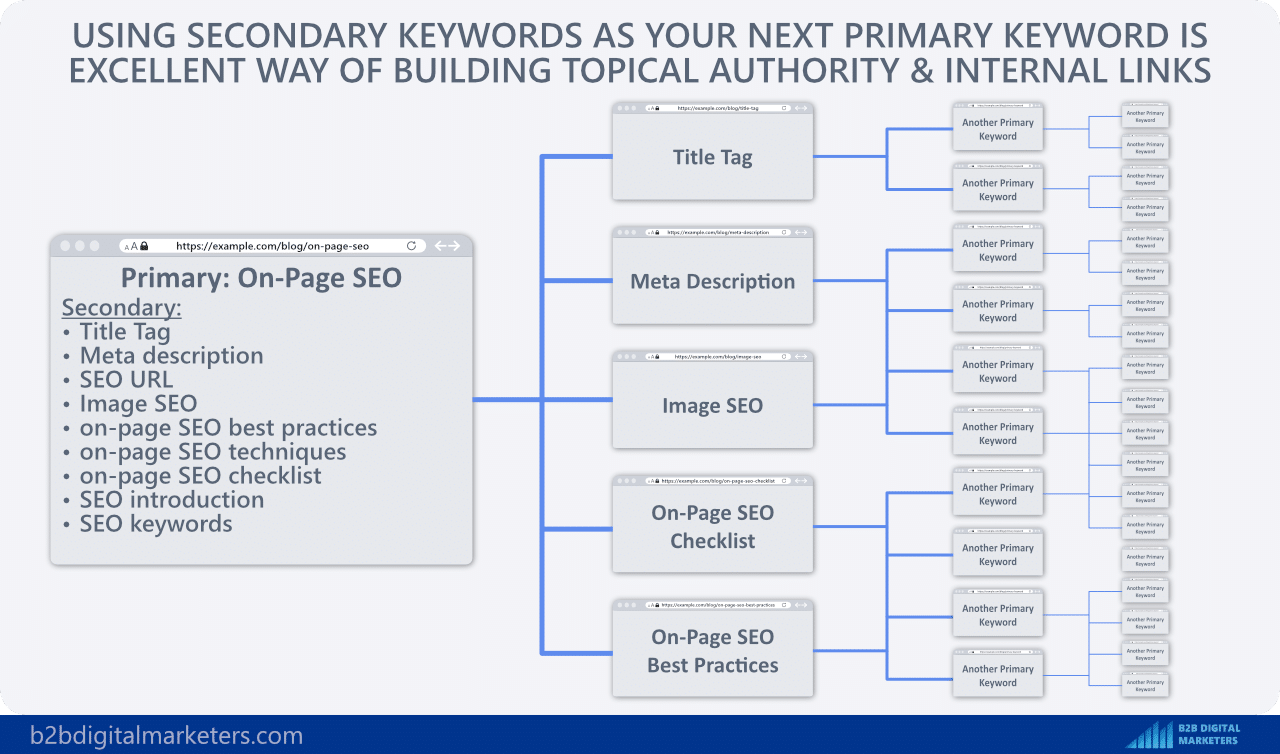
For example, if I am writing an article targeting the primary keyword “on-page SEO” some of the secondary keywords would be “title tag”, “meta description”, “SEO URL”, “SEO headlines”, “image seo”, “on-page seo best practices”, on-page seo techniques” etc.
And then I can take these secondary keywords and create pieces of content and target each of them individually, making them the primary focus of those pieces of content.
By making these secondary keywords become primary keywords for another article, I can better address the specific needs and interests of my audience and improve the overall quality and relevance of my content. This will ultimately help me to rank higher in search engine results and attract more organic traffic to my website.
However, not every secondary keyword can become a primary keyword, so make sure you do keyword analysis before.
Practice #2: Target Feature Snippets with Secondary Keywords
The next best practice for secondary keywords is to use them to capture featured snippets.
Featured snippets are a powerful way to gain visibility in search engine results pages (SERPs) and drive more organic traffic to your website. These are the highlighted boxes that appear at the top of search results and provide concise, direct answers to users’ queries.

With that, to use secondary keywords to target a featured snippet, you first must find those secondary keywords that can appear as a featured snippet for your primary keyword.
These are usually question-based keywords, listicle-based keywords, or keywords that indicate table-featured snippers.
The easiest way to find these relevant secondary keywords with a potential featured snippet is from the “People also ask” box.
For example, if I would be targeting the primary keyword “featured snippets”, then including the secondary keyword “what is featured snippet” can help me target the featured snippet.
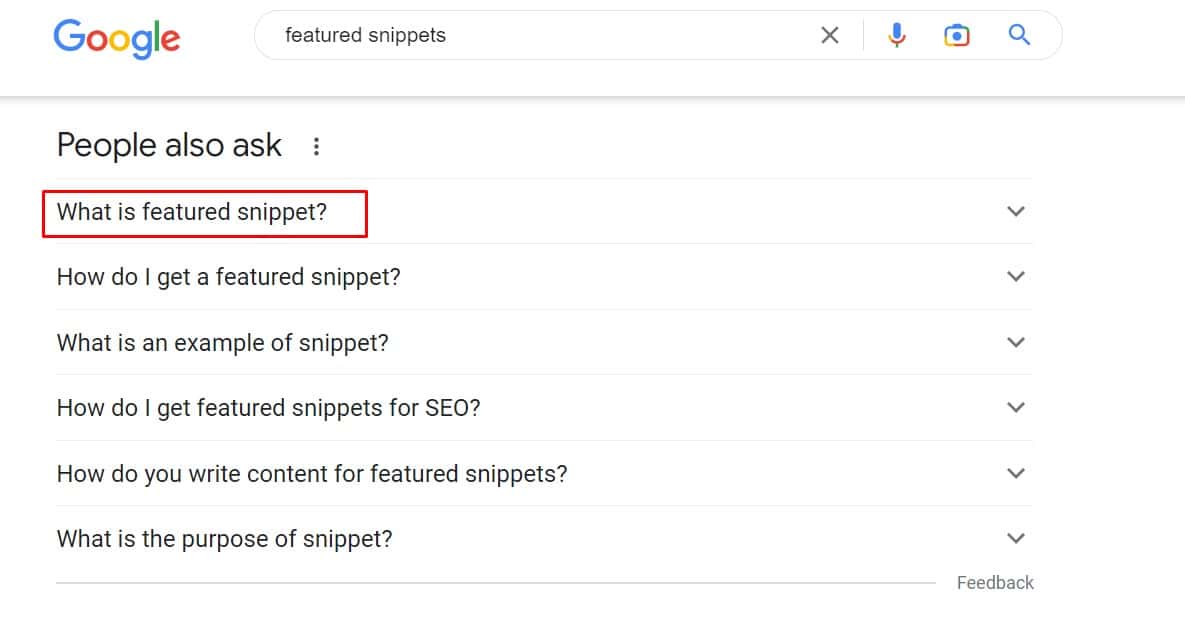
Another approach to identifying secondary keywords that you can use to target featured snippets is to analyze your competitors’ pages that rank for your primary keyword and examine their ranking keywords.
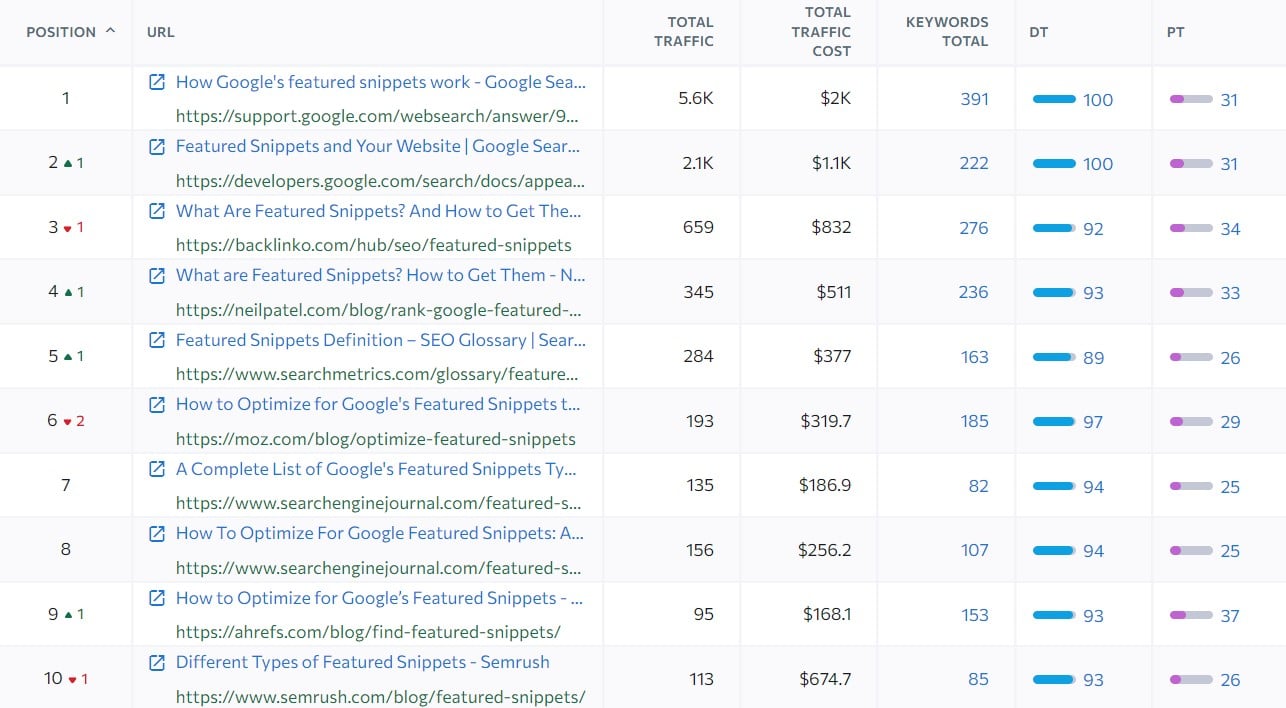
Most SEO Tools such as SE Ranking will show you what SEO keywords the ranking pages are ranking for along with the SERP features that appear for that particular keyword.
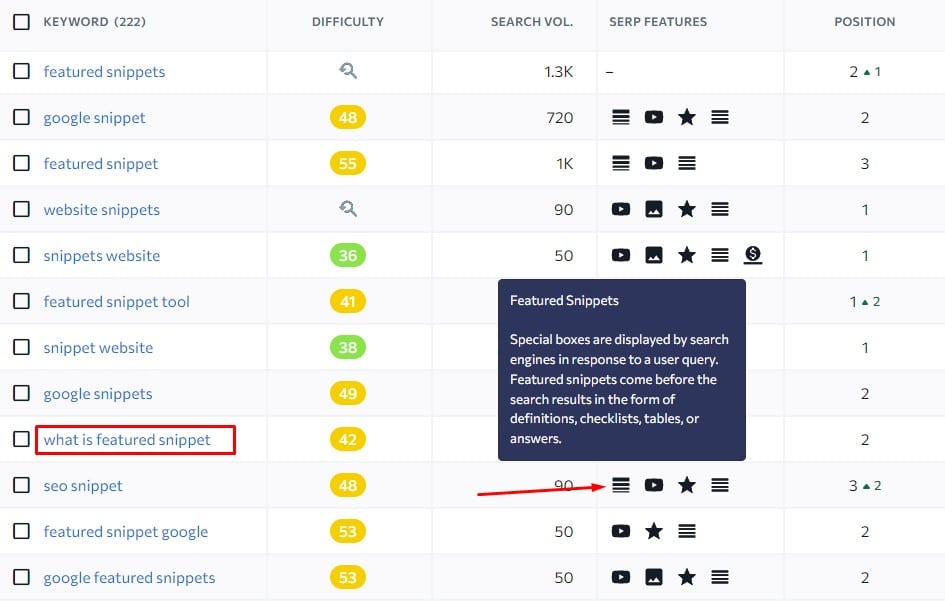
This is another great way to optimize your content to capture the feature snippets and increase your organic traffic potential.
Additionally, you can go through the competitor’s website and analyze what long-tail keywords and question-based keywords they are using within the content and whether those keywords are having featured snippets in the SERPs.

Practice #3: Increase Ranking for More Keywords
Another great practice of using secondary keywords is to use them to increase ranking for more keywords with your content.
For example, as I showed you, you can use the secondary keywords from the People also ask box and use them within your subheadings or FAQ section of the content.

Or you can use secondary keywords within your title tag and meta description to make it more relevant to a wider audience.
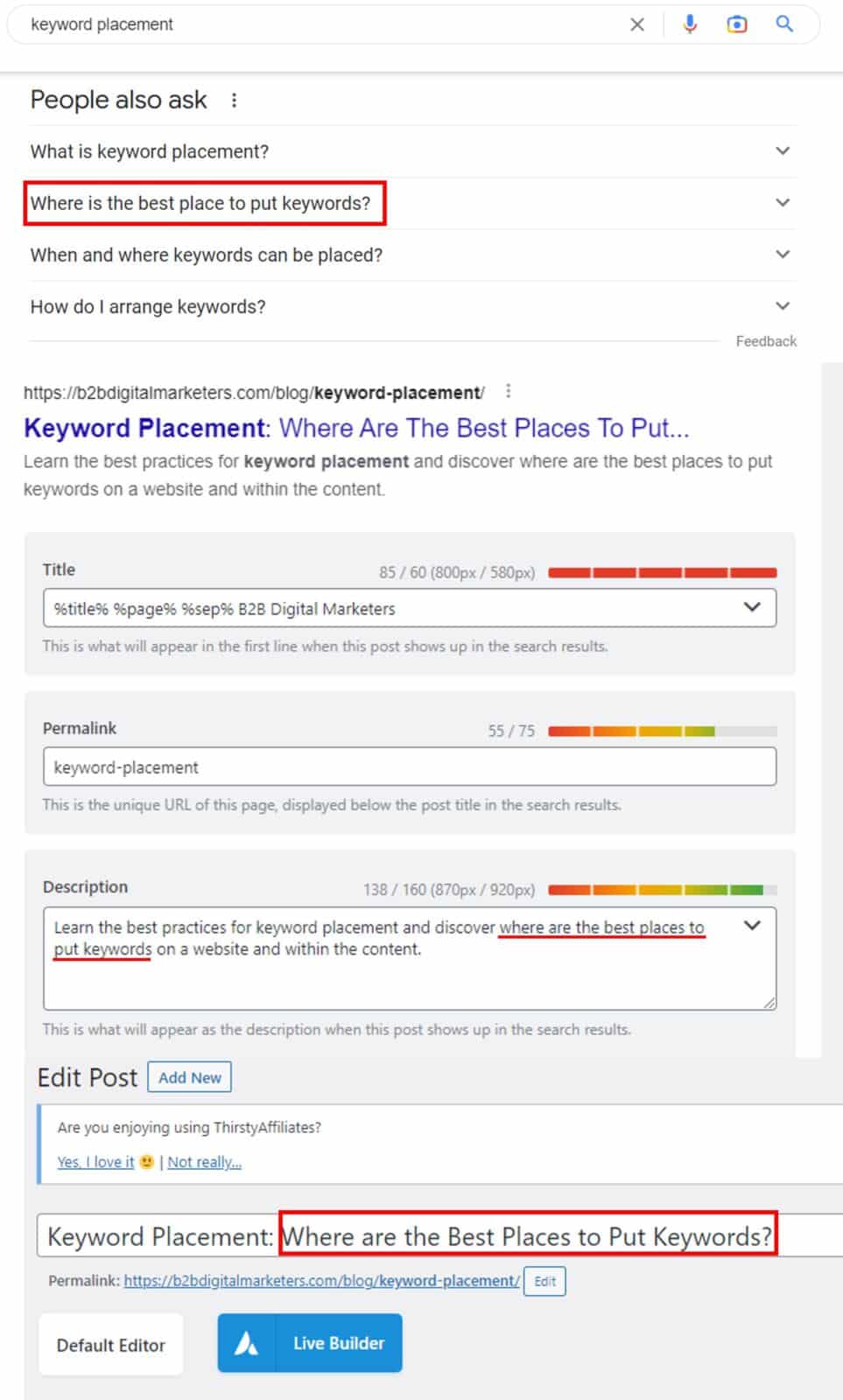
And there are a lot more places where you can utilize the secondary keywords to rank for more keywords with your content.
The key is to think of different ways how you can use secondary keywords within the content be it in subheadings, FAQ sections, title or meta description, in image alt-text and titles, and other keyword placement areas.
Practice #4: Optimize for Up to 20 Secondary Keywords
Another important best practice for secondary keywords is to optimize your content for up to 20 secondary keywords.
As you could see, there could be many different keywords you can find for your content, but it’s important to prioritize the ones that are most relevant and have the highest search volume.
Once you’ve identified your top 20 secondary keywords, make sure to incorporate them strategically throughout your content, including in your headings, subheadings, meta descriptions, and image alt tags.
However, in most cases, for smaller topics, you will not find more than 20 secondary keywords to optimize your content for.
But for the large topics, I generally recommend optimizing your content for up to 20 secondary keywords to make sure you don’t go too far off and stick to the overall main topic.
Practice #5: Do Historical Optimization with Secondary Keywords
And the last secondary keyword best practice I have for you is to update your old content (AKA historical optimization) with secondary keywords you are ranking for.
As your content age, it starts ranking for hundreds or even thousands of relevant secondary keywords that you can use to optimize and update your content.

Using these keywords from Google Search Console and SEO tools, you can effectively improve the ranking for the page, while optimizing your content with additional value with relevant information.
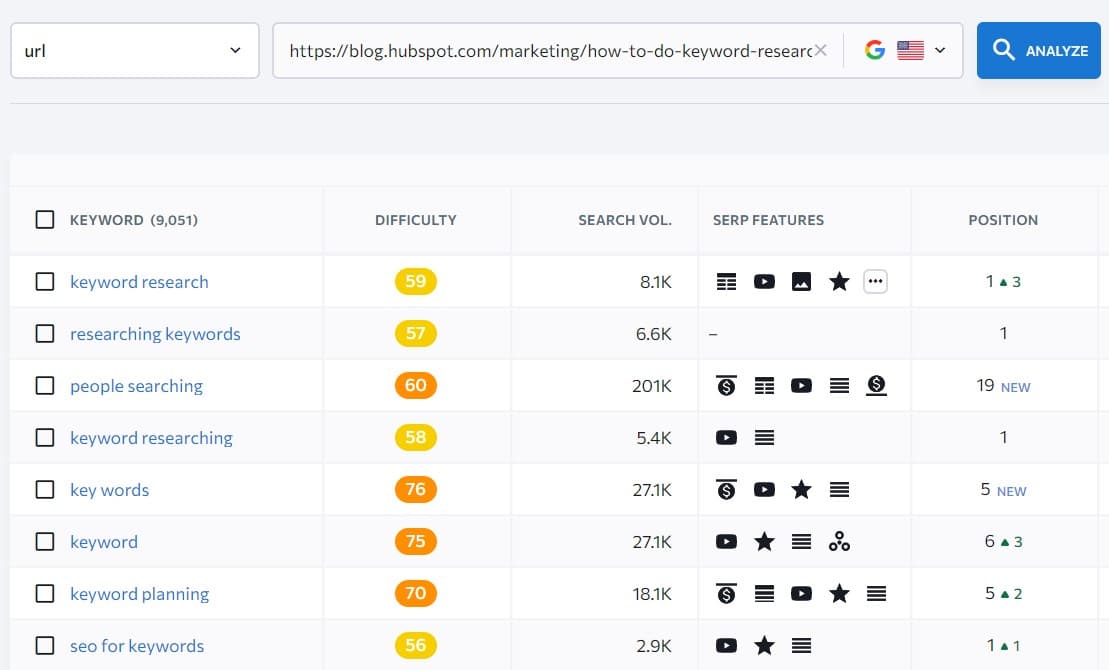
However, it’s important that you select the most relevant secondary keywords so that when you put it in Google Search, it shows the same page targeting the same keyword.
For example, my page is targeting the primary keyword “b2b marketing blogs” and ranks for keywords such as “best b2b blogs”, “b2b blogs”, “b2b digital marketing blog”, and “content marketing blogs”.
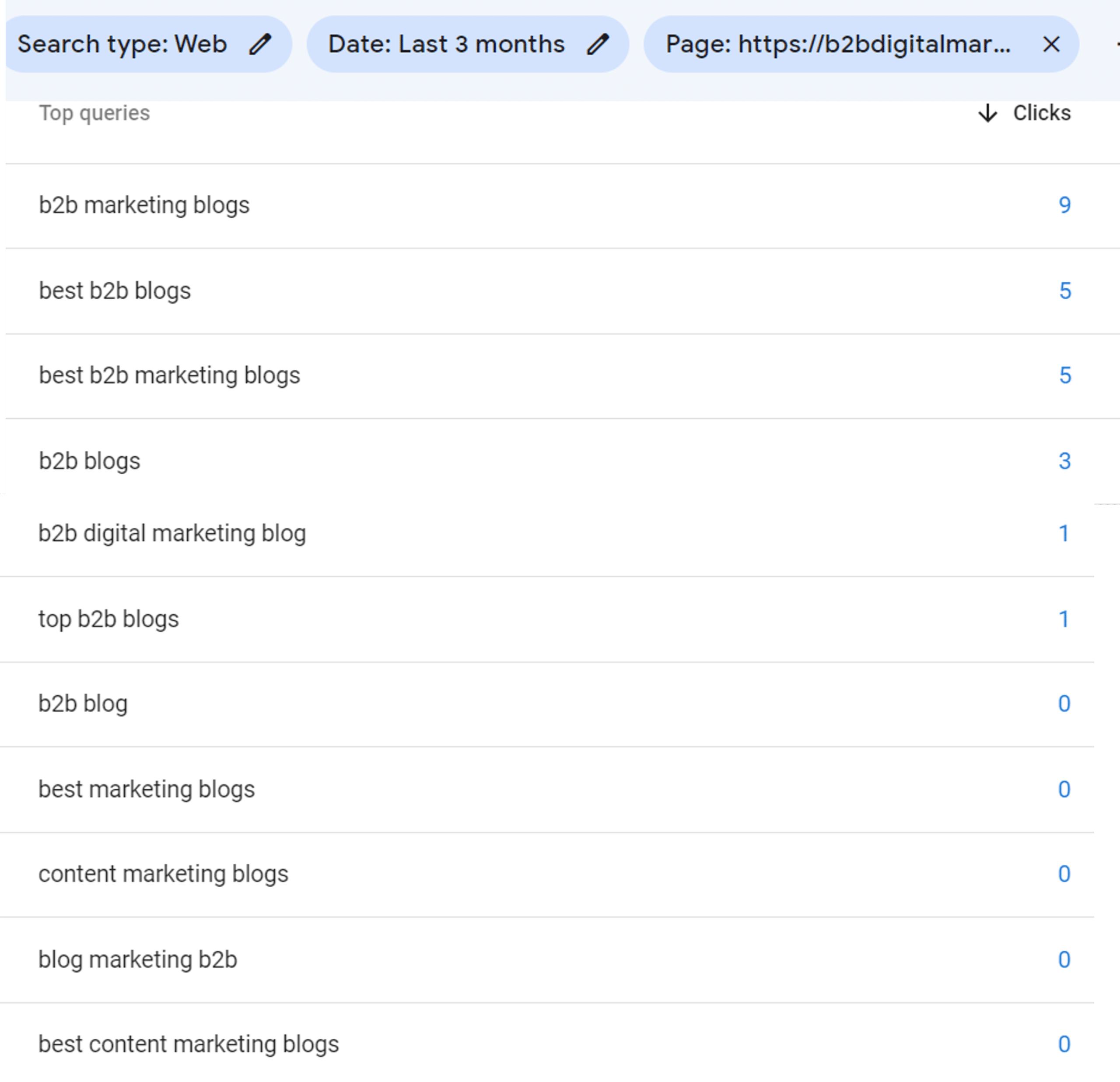
But I would not update and optimize the page for the keyword “content marketing blogs” as if I put it into Google Search, I can see, totally different pages, targeting different primary keywords.
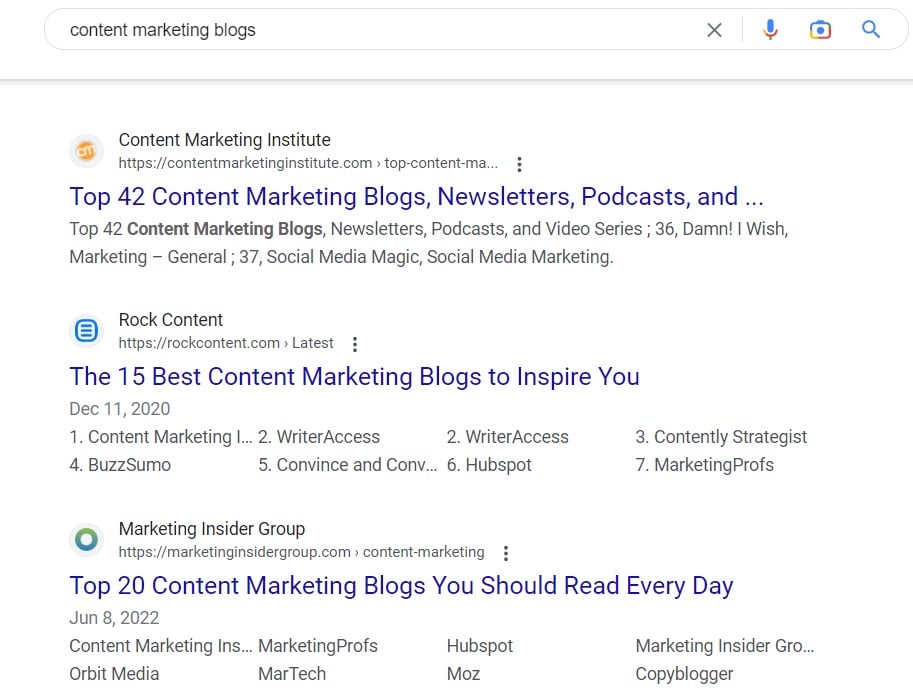
That’s why even if I would optimize the page for this keyword, it would never rank.
But I will definitely optimize for the keywords “b2b digital marketing blogs” or “b2b blogs” as these are very relevant to the searcher query.
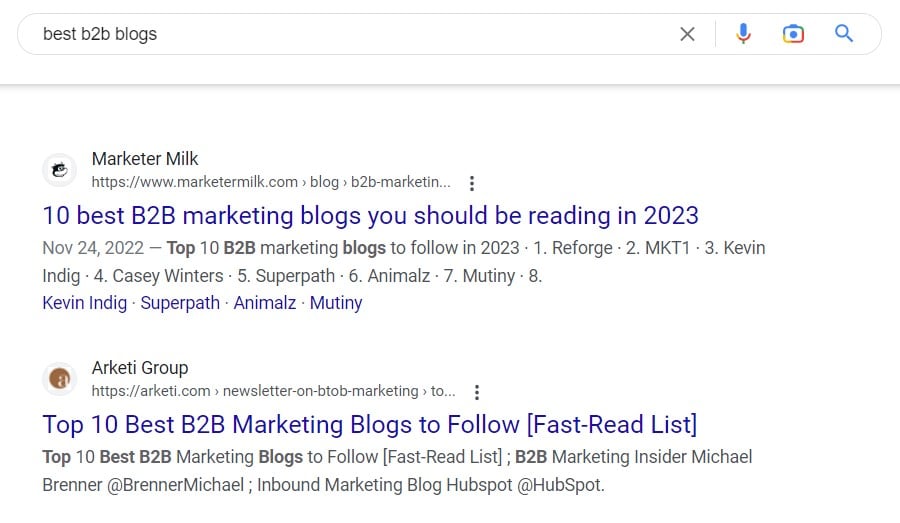
With that being said, to learn more, you can check out my article on historical optimization to learn how to use secondary keywords to update aged content.
Primary and Secondary Keywords Examples
Here are some of the primary keyword examples and their relevant secondary keyword examples across different niches just to get a better understanding:
Primary Keyword: Virtual Classrooms
Secondary Keywords Examples:
- What is a virtual classroom
- Virtual classroom platforms
- Virtual classroom benefits
- MOOCs
- Bootcams
Primary Keyword: Decentralized Finance
Secondary Keywords Examples:
- DeFi
- Decentralized vs centralized finance
- Centralized finance
- Benefits of DeFi
- Decentralized applications
- DApps
Primary Keyword: Whitewater Rafting
Secondary Keywords Examples:
- Colorado whitewater rafting
- Best whitewater rafting in the us
- What is whitewater rafting
- Rafting vs whitewater rafting
- Whitewater rafting trips
Primary Keyword: Decision Support Systems
Secondary Keywords Examples:
- What is a decision support system
- DSS
- Decision support systems examples
- DSS benefits
- Decision support systems Benefits
- Decision support database
Final Advice to Secondary Keywords
Secondary keywords are essential for SEO strategy as they will allow you to maximize your organic traffic potential and grow your website traffic and lead generation far more However, it is important to remember that secondary keywords should be used strategically and not in a spammy or unnatural way.
Your goal is to use only the most relevant secondary keywords to rank for those keywords that can drive organic traffic and ultimately revenue for your business.
Related Articles:
Also, check out our SEO hub page to find all our SEO resources.
Disclaimer
This article was created by Eduard Dziak and may contain affiliate links. The following were used to optimize the article for the best user and search engine experience include:
- SE Ranking for keyword research and on-page SEO optimization
- Surfer SEO for SEO-friendly content creation for users and search engines.
- Jasper AI for grammar correction and information enhancement.
The article is based on the author’s own experience and knowledge, drawn from both their own work and that of their clients, to provide the latest, proven methods.








